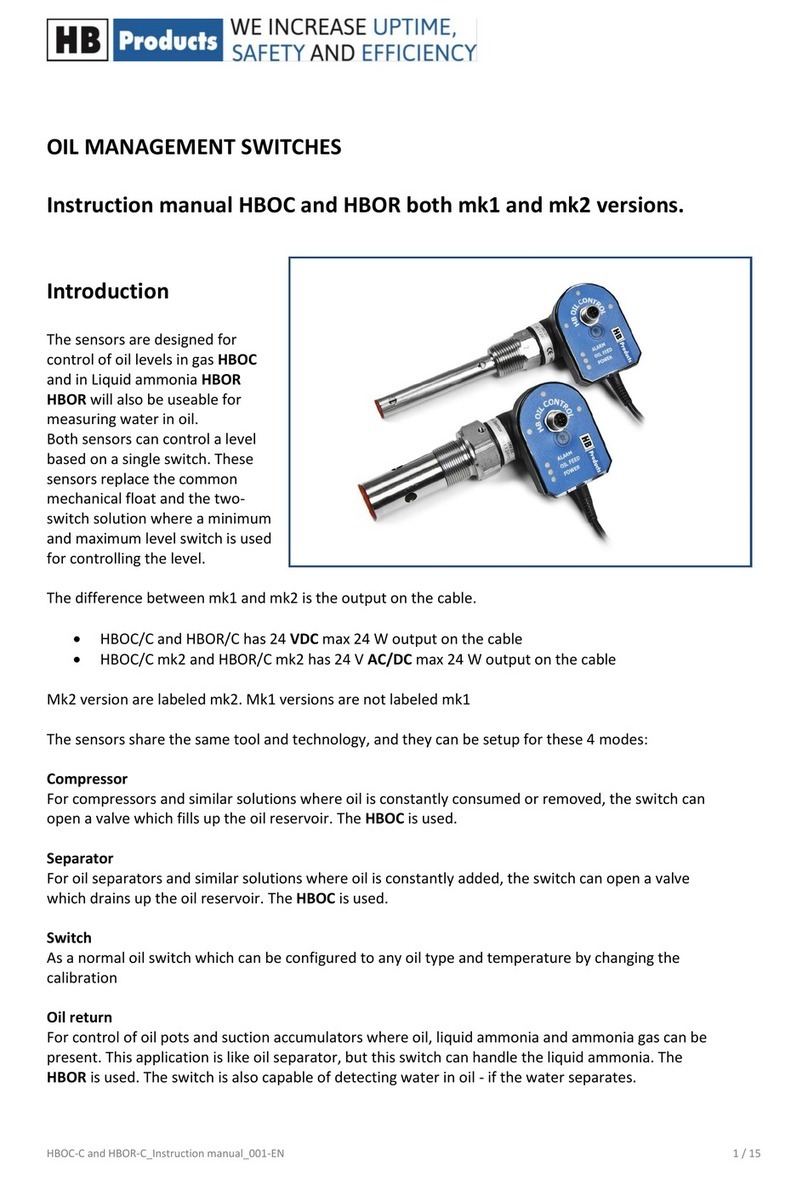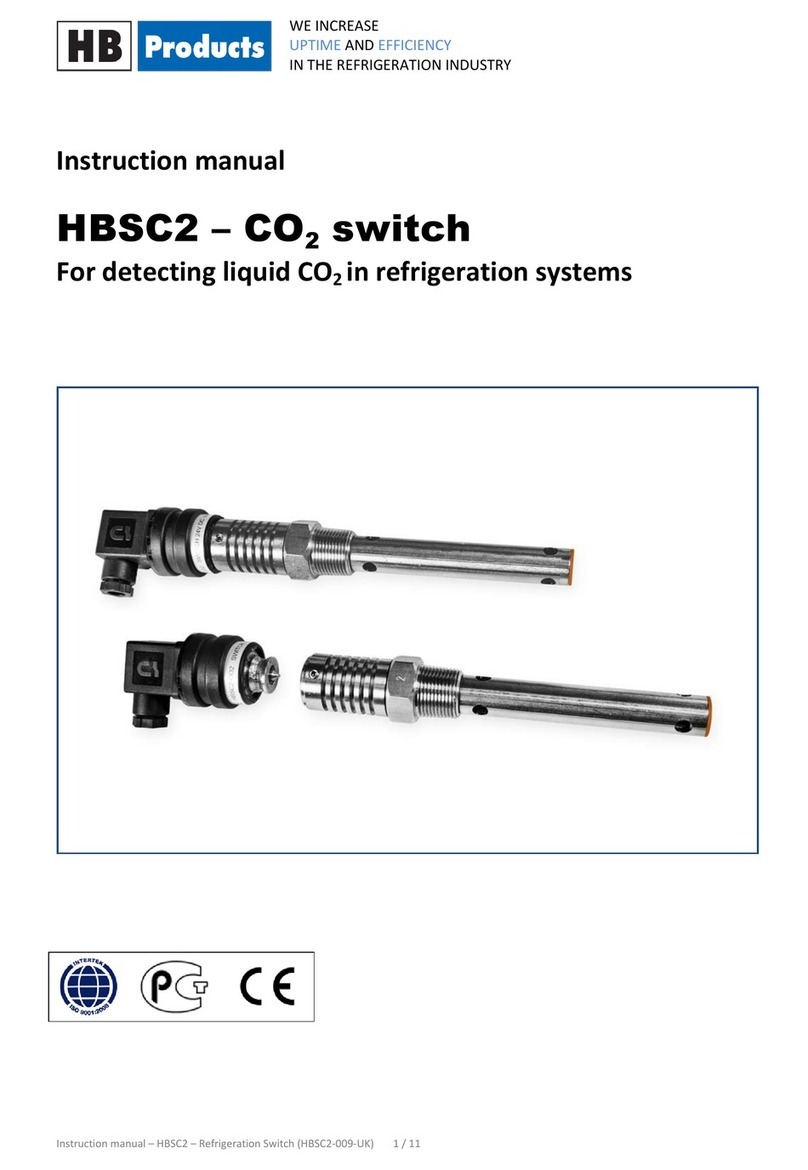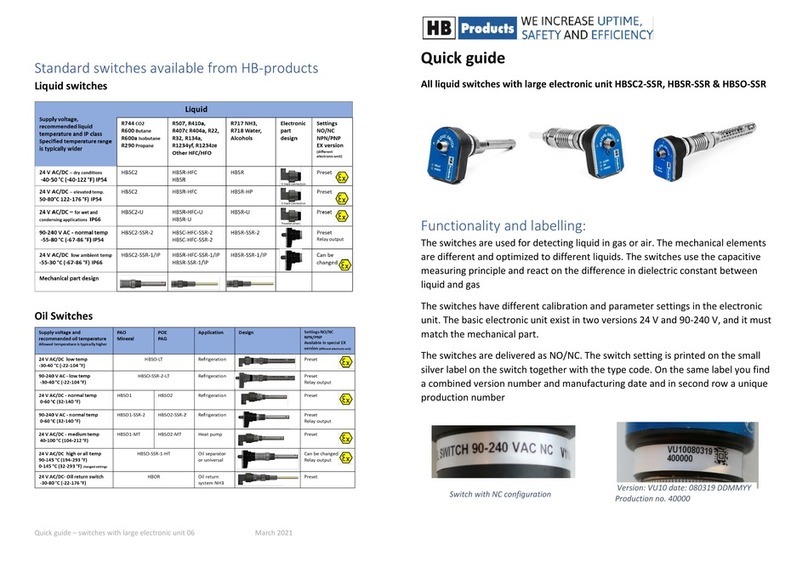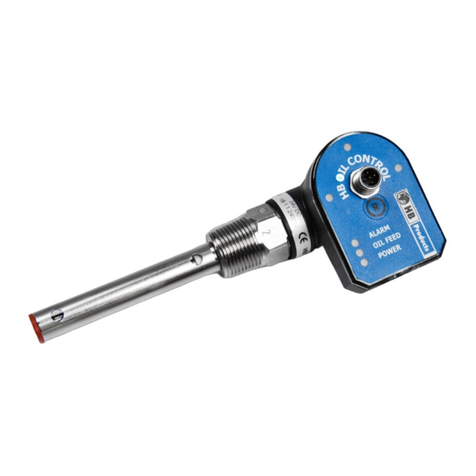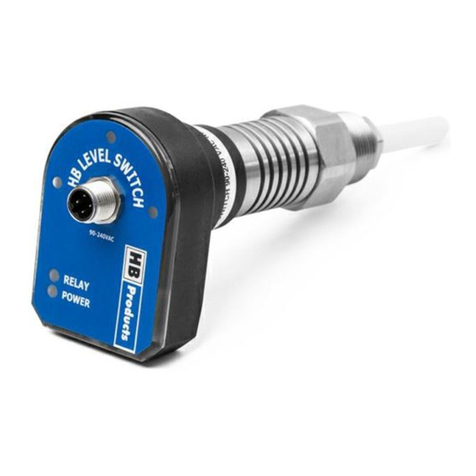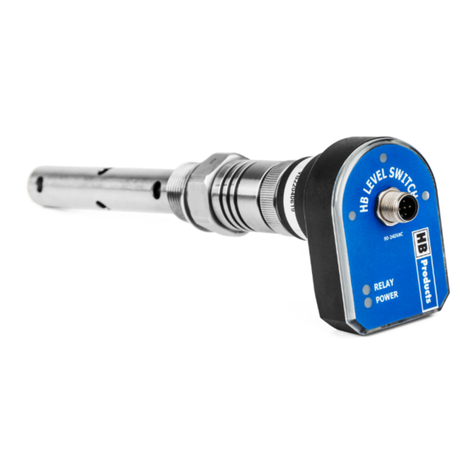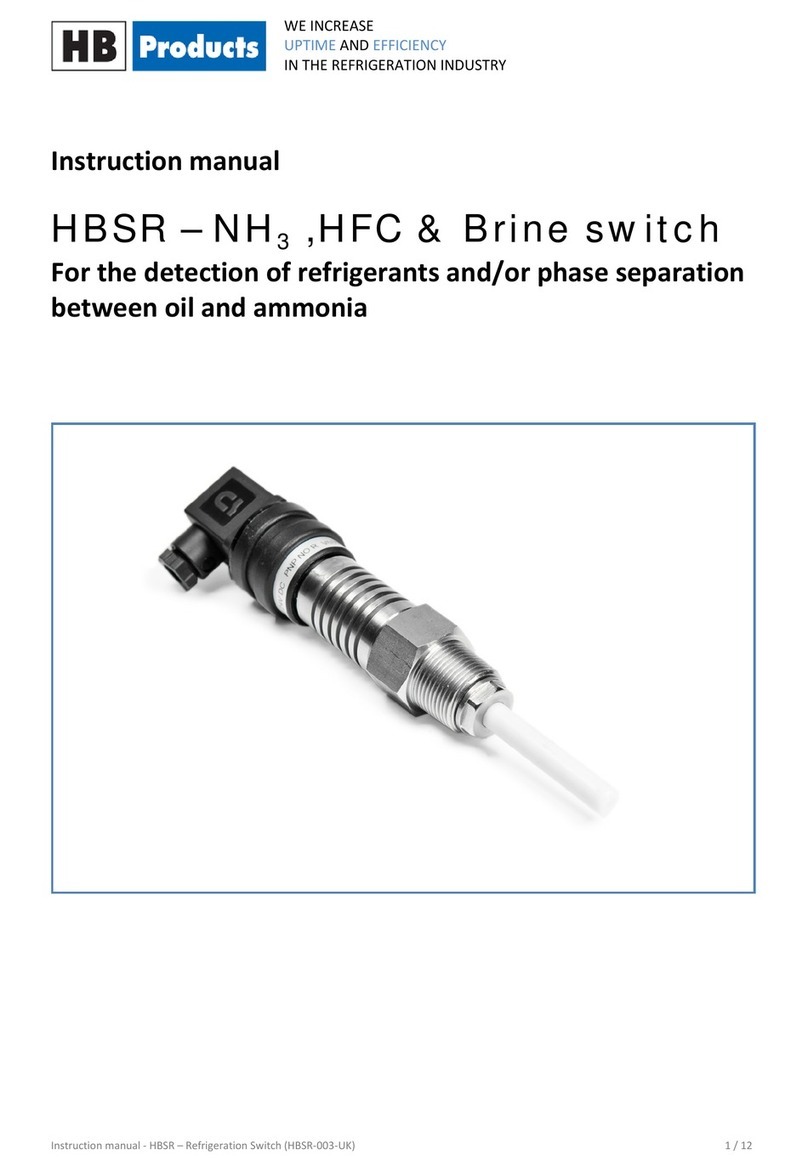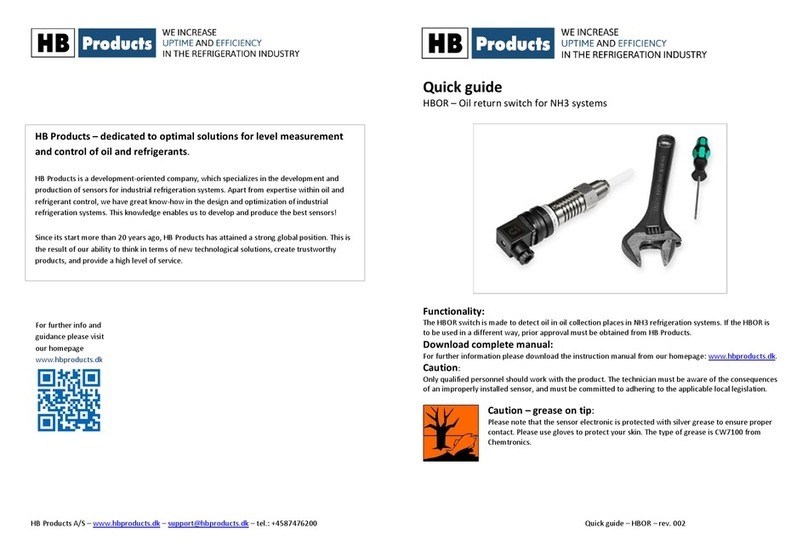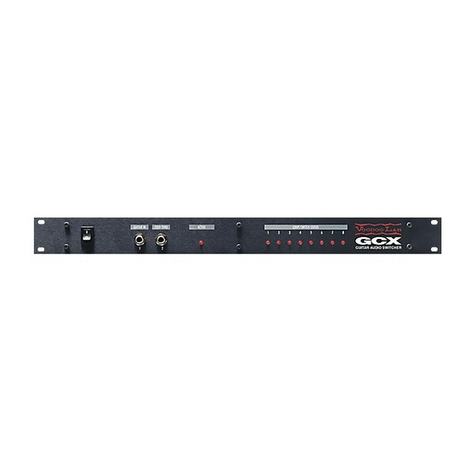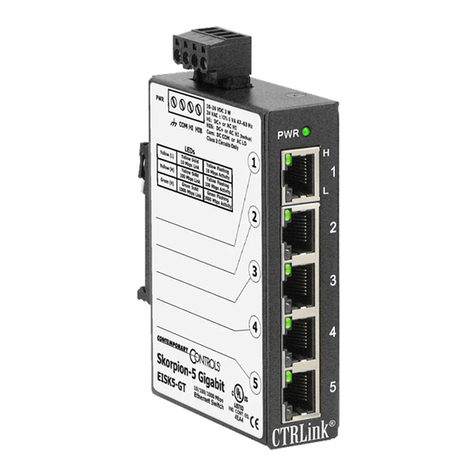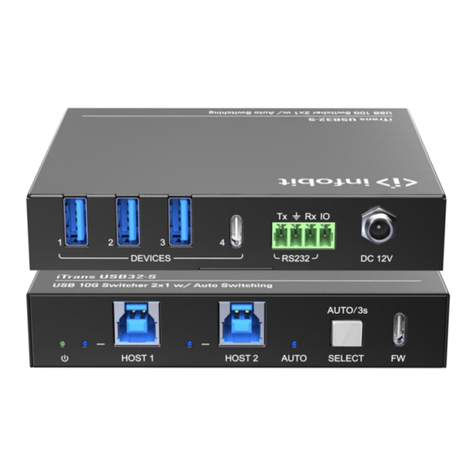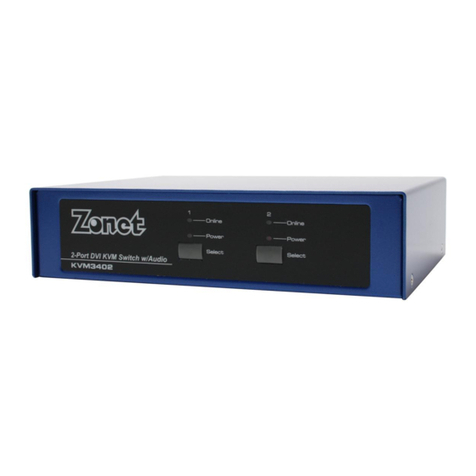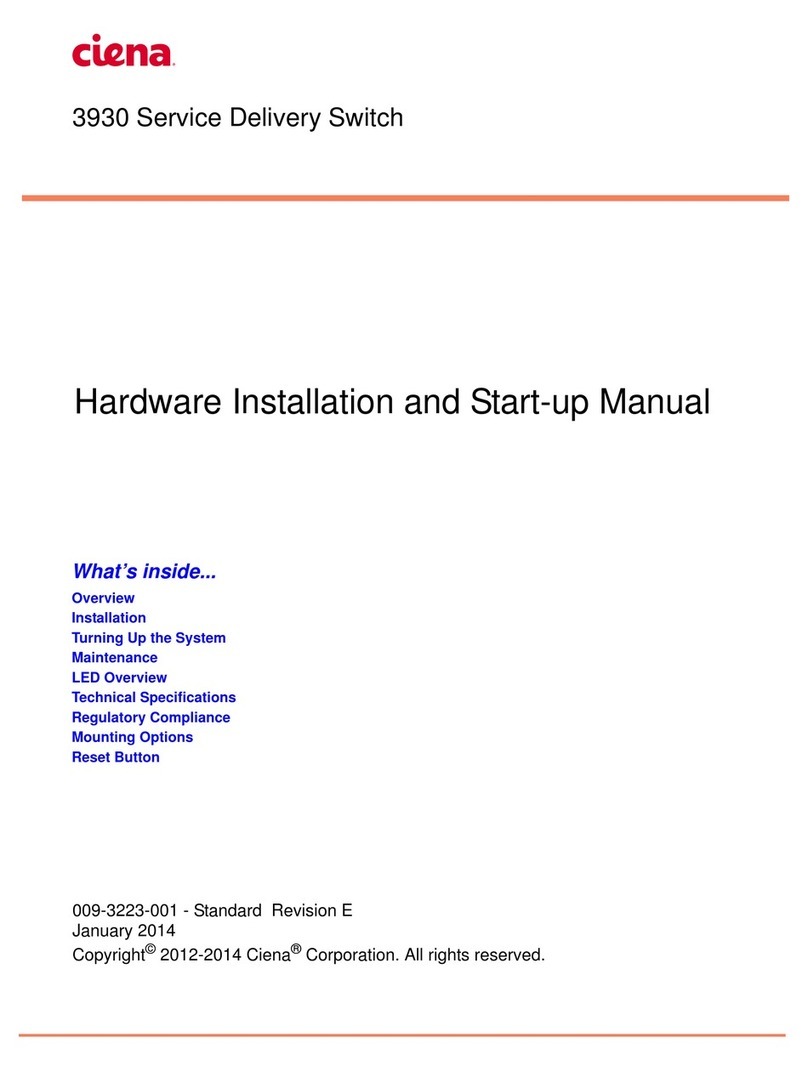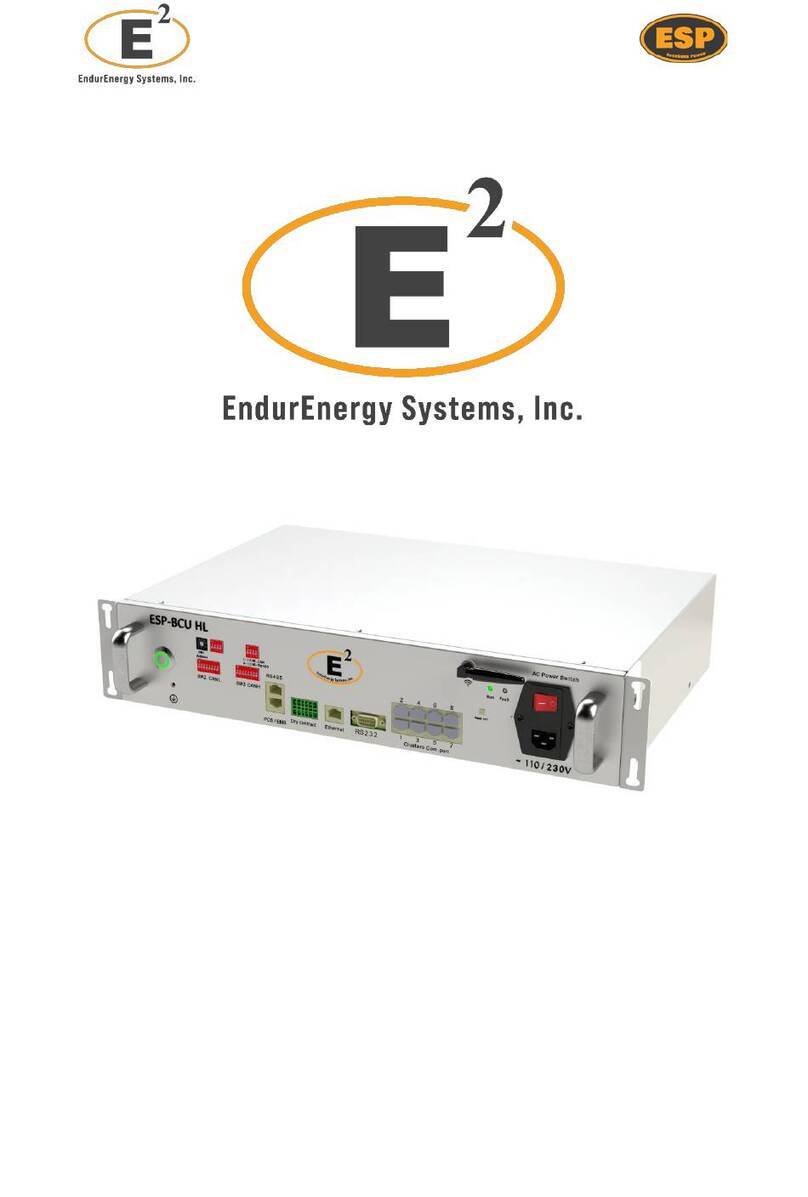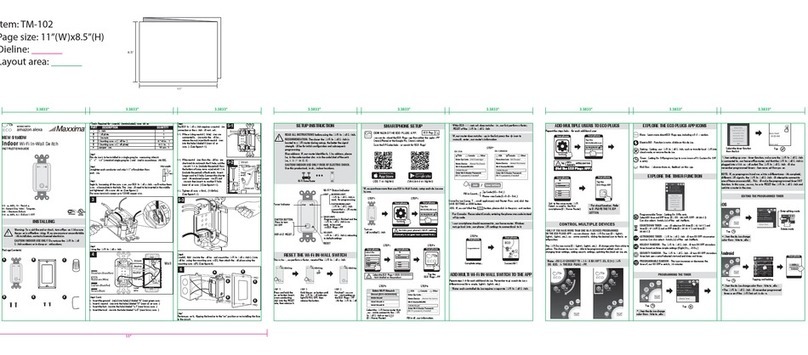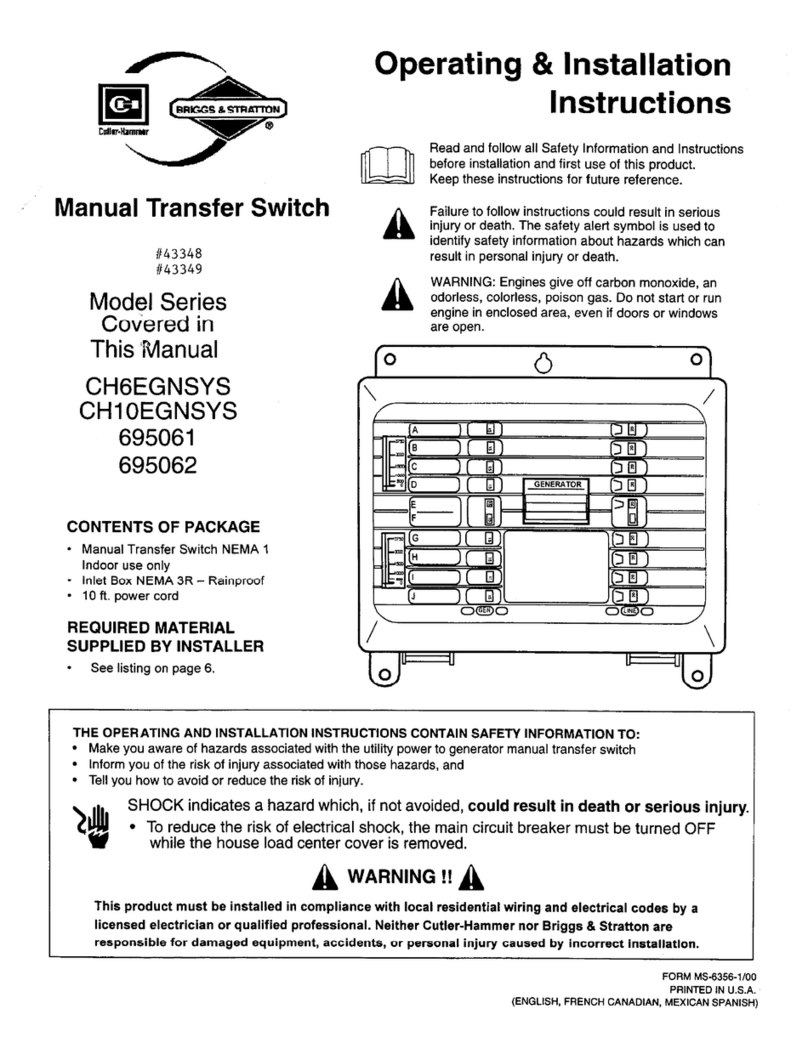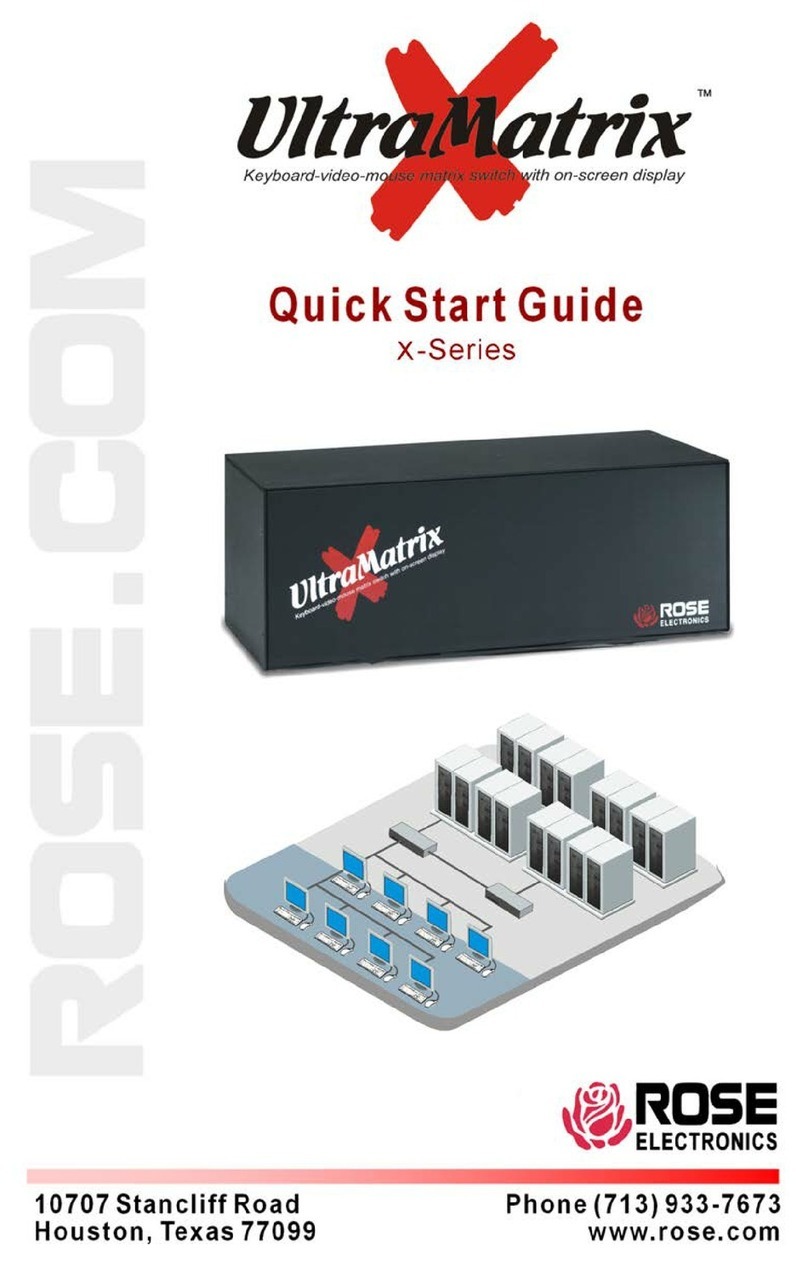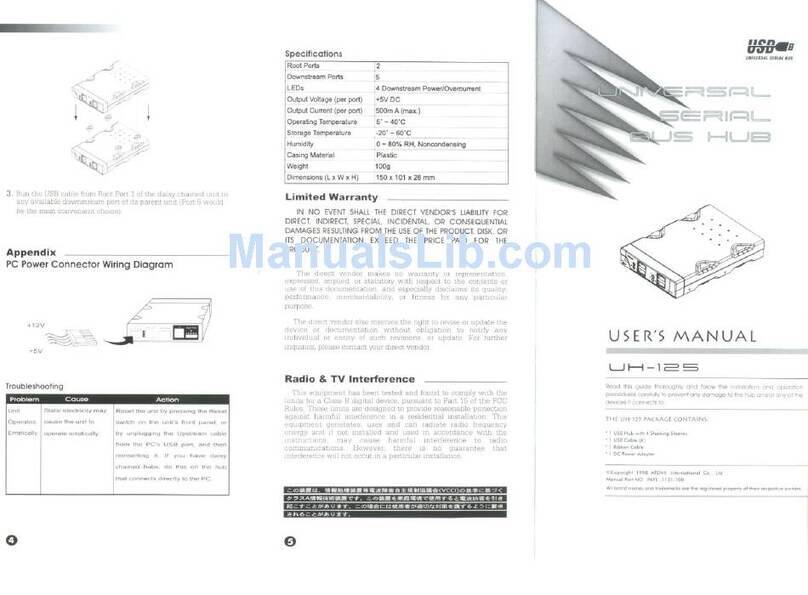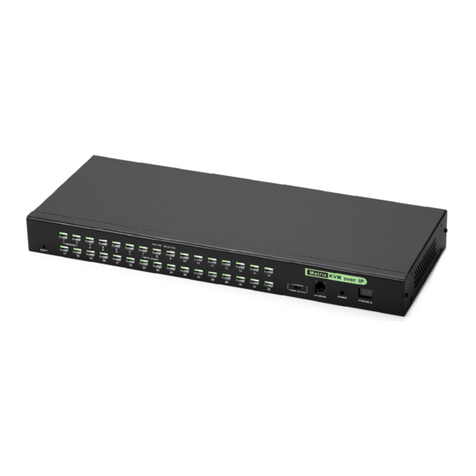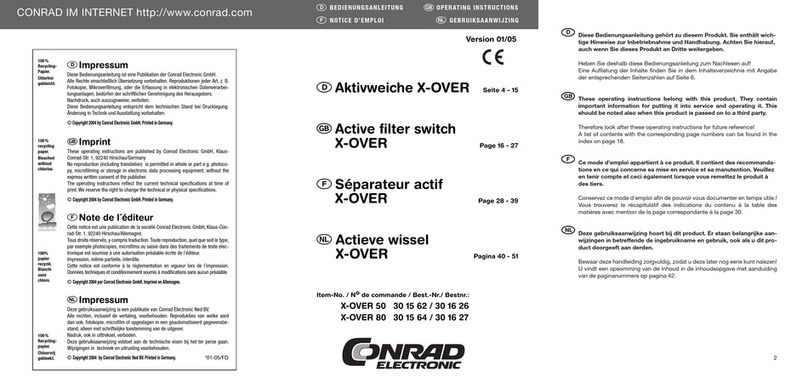
HB Products A/S –
www.hbproducts.dk –
[email protected] – tel.: +4587476
00
Quick guide – HBSC
– rev. 001-
01
echanical specifications:
Ambient temperature: - 0…+50°C
Liquid temperature: -30…+100°C
Max. pressure: 150 bar
Material, mechanical: AISI304/PTFE
Thread connection: see packaging.
Electrical specifications:
Supply: 4 VDC
Current draw: Max 50 mA
Plug: DIN 43650
Enclosure: IP65
Material, electronics: Nylon 6 (PA).
Testing of electronics can be conducted without de-pressurizing the
system. Check the instruction manual for further information.
Function and outputs:
LED indication: 4 x LED (red)
Liquid: CO liquid refrigerant
Transistor output: NPN or PNP
Output function: NO or NC.
Installation guide:
In case the sensor is installed in a threaded sleeve/pipe stub, this should
be welded at a 5-10° upwards angle relative to the horizontal, so as to
prevent the formation of liquid pockets.
The installation length of the sensor must be taken into account, since
there must be at least mm between the sensor's mechanical part and
other fixed or moving parts.
Output types:
HBSC can be delivered with a PNP or NPN output.
The connection depends on the selected sensor type as well
as the type of controller/PLC used.
LED activation:
4 x red LEDs indicate liquid
Irrespective of the output function NO/NC, LEDs are activated at CO
liquid level.
Function of charge output on pin 3 & 4:
NC: There should be no signal when it is in refrigerant.
NO: There should be a signal when it is in refrigerant.
Caution! In case of welding work on the unit, the electronic part must be
removed. Welding work can damage the electronics. The mechanical
part of the sensor must not be installed in the pipe socket during
welding.
Note! All terminals are protected against improper
termination with a supply voltage up to 40 V. If the supply
voltage is greater than 40 V the electronics will be damaged.
Note! LED is always activated when approx. half of the sensors is
covered or immersed in refrigerant, irrespective of the sensor's output
function NC/NO.
Note! Fault detection on the electronic function can be carried out
without releasing pressure from the system or disassembling the
mechanical part of the sensor.
